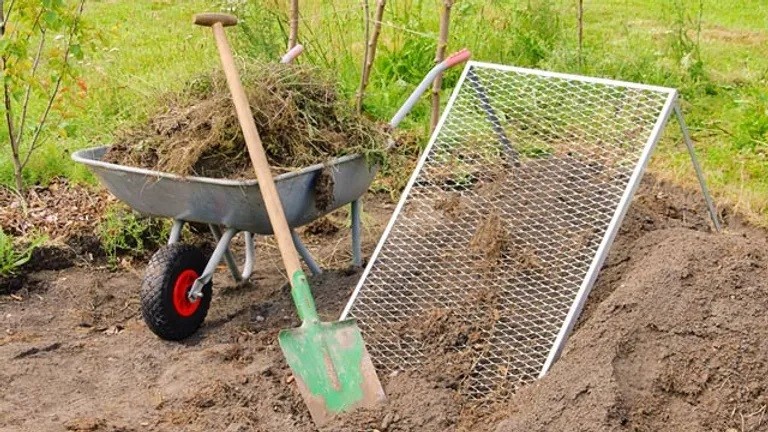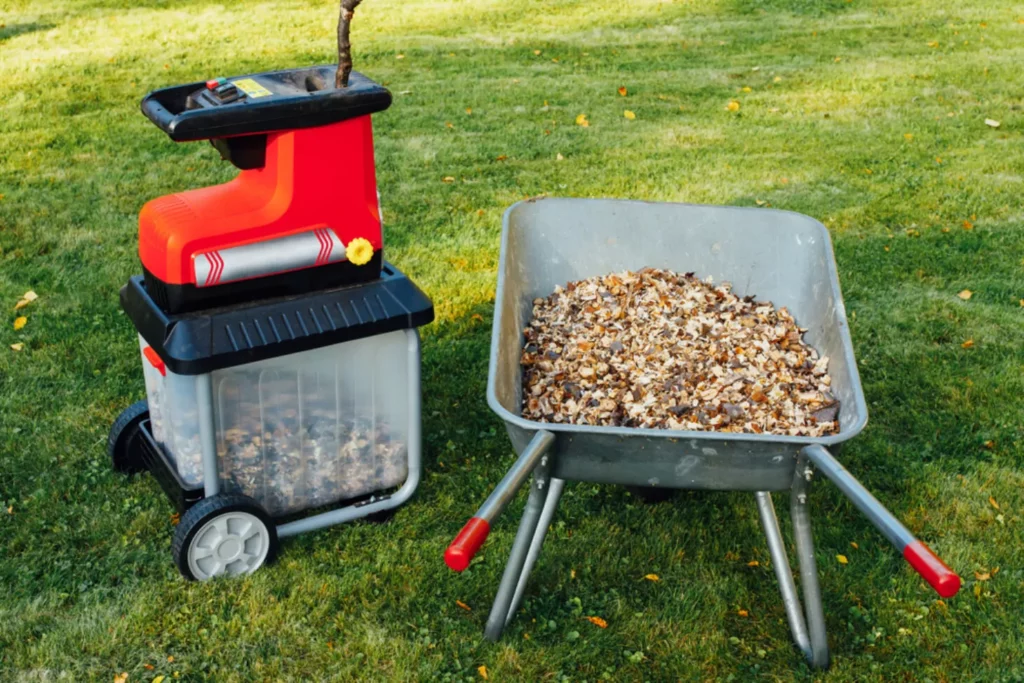To ensure that garden waste decomposes quickly on the compost and can be used as fertilizer, it should be shredded well beforehand. For this purpose, shredders are suitable, with which you can also cut large quantities of compost material into small pieces. Which devices are suitable for shredding compost?
Contents
What compost can you chop?
Basically, you should chop all garden waste nice and small before composting. Since shredding by hand can be very strenuous for large quantities, it is worth purchasing a garden shredder.
Especially in large gardens with a lot of tree and shrub cuttings, a good shredder (849,00€ at Amazon*) is indispensable.
All materials from the garden and kitchen can be shredded:
- Tree residues
- Shrubbery cuttings
- leaves
- dried up plants
- fruit and vegetable waste
Caution: Garden waste that is infested with pests or fungal spores such as mildew should not be chipped or composted in the garden. Such waste belongs in the household garbage.
Various devices for shredding compost
The market of shredders for the garden is unmanageable. There are three main types:
- Knife shredders
- Roller shredders
- Shredders with turbine cutting unit
The larger the garden, the higher the quality and performance of the shredder.
Knife shredders work very fast, but are very noisy and therefore not ideal in closely built-up residential areas. Roller shredders are quieter, but they do not shred the compost as quickly. Shredders with turbine cutting units are both quiet and fast.
Only buy shredders with a seal of approval
It is better to spend a little more money on a shredder with a seal of approval. Here, the risk of injury is not as great as with cheap offers.
Make sure that the blades or rollers can be easily removed, as they need to be cleaned and sharpened regularly.
An integrated catch basket can be very useful to collect the chopped compost material. This saves you from having to rake it up afterwards.
Shredding compost with protective clothing
When shredding garden waste, protect your skin and eyes from flying debris. No matter which shredder you use, flying chippings cannot be completely avoided.
TIPS
Very wet garden waste should be stored in the garden to dry out before shredding. Dry shrubbery is very good for making an overly moist compost drier.
For the composting of your garden and kitchen waste to succeed, several steps are necessary. To end up with a loose and nutrient-rich humus, you should always pay attention to the consistency of your compost pile.
Shredding the material
The first important step in preparing garden waste for composting is shredding the organic material. You should especially shred large branches and twigs to make it easier for the microorganisms to decompose. As a rule, pruning shears are sufficient; for large quantities of branches, if in doubt, you should enlist the help of a shredder. The smaller the materials you add to your compost, the faster they will decompose. The bottom layer should be straw, bark mulch or twigs.
How to compost correctly

You should always mix wet and dry material well. For example, if you have prepared prunings, you can mix them with lawn clippings or kitchen waste. It is important that the material lies loosely on top of each other. As the Bavarian State Office for the Environment explains, fine cavities in the compost ensure good aeration.
Turning the compost heap
If you have a small compost pile consisting of very finely shredded materials, you do not need to turn it. In larger compost piles, on the other hand, too much moisture collects in the layers, which can cause rotting and impede decomposition. Two to three months after starting the compost, you should therefore mix the older layers with newly added material.


